When thinking about fruits, blue fruits usually aren’t the first to come to mind. But you may be surprised to learn that there are more blue fruits and vegetables out there than you think. Not to mention, there are numerous blue fruit benefits and uses that you probably wouldn’t consider! In this guide, I share some of the best blue fruits you can introduce into your kitchen for a healthy diet and mouthwatering baked goods and desserts.
Jump to:
- The Best Blue Fruits
- 1. Blueberries
- 2. Blackberries
- 3. Elderberry
- 4. Concord Grapes
- 5. Blue Sausage Fruit
- 6. Blue Honeysuckle Fruits
- 7. Blue Java Bananas
- 8. Texas Blue Giant Fig
- 9. Juniper Berries
- 10. Blue Marble Fruit
- 11. Blue Permain Apple
- 12. Ceylon Blue Olives
- 13. Indigo Rose Tomatoes
- 14. Black Currant
- 15. Damson
- 16. Bilberries
- 17. Blue Corn
- 18. Sloe Plums
- 19. Juneberries
- 20. Huckleberries
- 21. Kastoree Mango
- 22. Ribier Grapes
- 23. Laurestine
- 24. Filius Blue Pepper
- 25. Jostaberries
- Blue Fruits FAQs
- Related Blue Fruits Recipes
The Best Blue Fruits
1. Blueberries
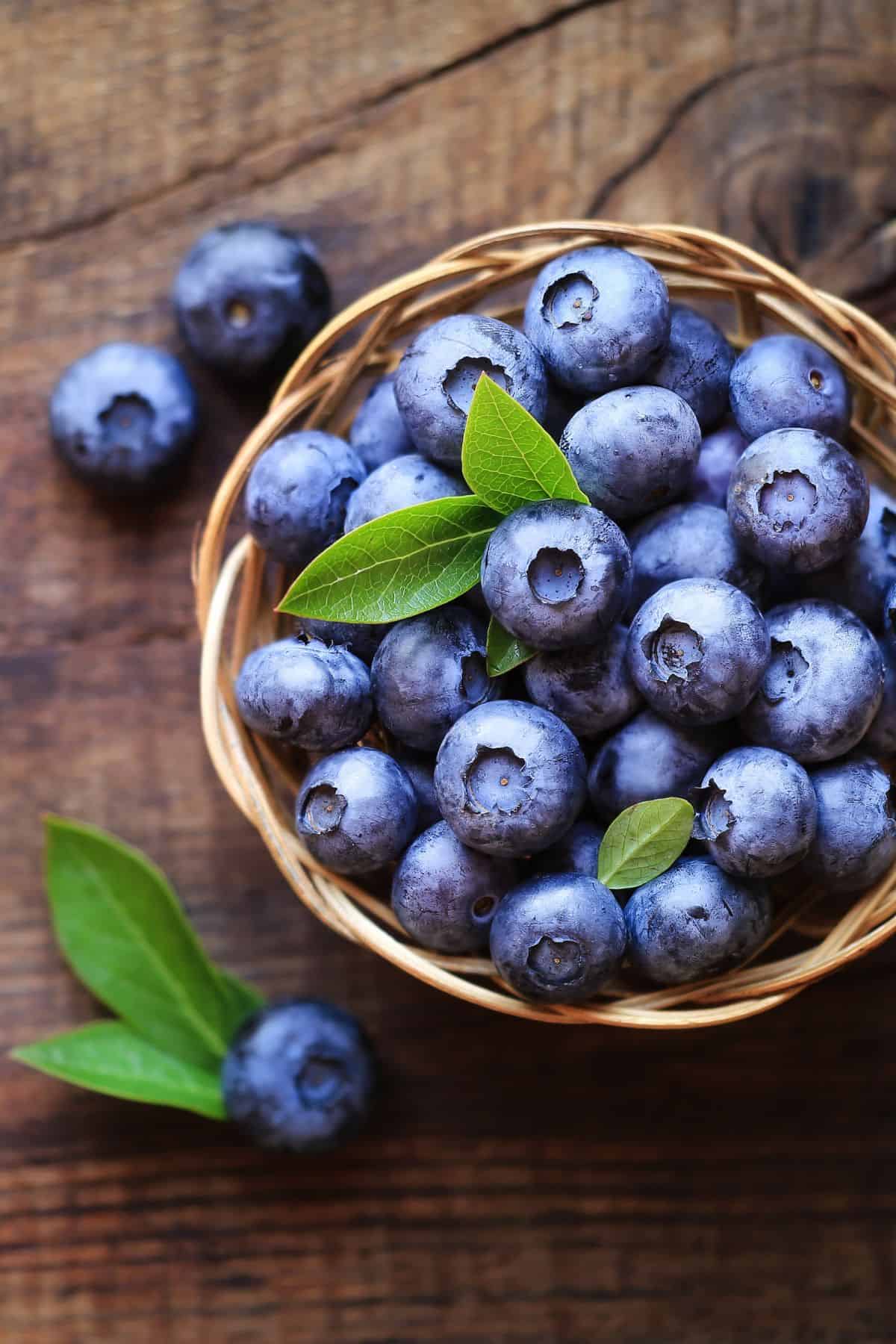
Blueberries are what most people think of when they think about blue color fruits. These round, small blue berries are both sweet and tart in flavor and range in color from blue to almost black. You can eat blueberries raw, add them to yogurts and porridge or oatmeal, turn them into jams and jellies, or make blueberry desserts and baked goods such as blueberry muffins and pies. Considered one of the healthiest fruits you can eat, blueberries are low in calories, high in fiber, and are one of the best natural sources of antioxidants.
2. Blackberries

Although its name says otherwise, blackberries have dark blue to dark purple skin. Like blueberries, their flavor can range from sweet to tart, depending on their level of ripeness. They are delicious when turned into jams and preserves and baked into pies, muffins, and recipes like my easy clafoutis. Blackberries offer a multitude of health benefits, such as boosting brain and oral health.
3. Elderberry

Elderberries are small, tart berries with a blackish-violet or blue color. Because of their naturally tart flavor, they are best in sweet desserts, jams, syrups, teas, and wine. Elderberry is also one of the most commonly used medicinal plants, packed with antioxidants and vitamins that can boost your immune system. It is often used as a supplement to relieve cold and flu symptoms.
4. Concord Grapes

Concord grapes are bluish-purple grapes that are rarely eaten fresh but are instead used to add grape flavor to foods as well as to make jellies, jams, juices, and wines. Its pulp very easily slips out of the skin, making it great for cooking but not so great for transporting or keeping in the supermarket. Concord grapes contain nutrients such as polyphenols that can contribute to improved health, better immunity, and relaxed arteries.
5. Blue Sausage Fruit
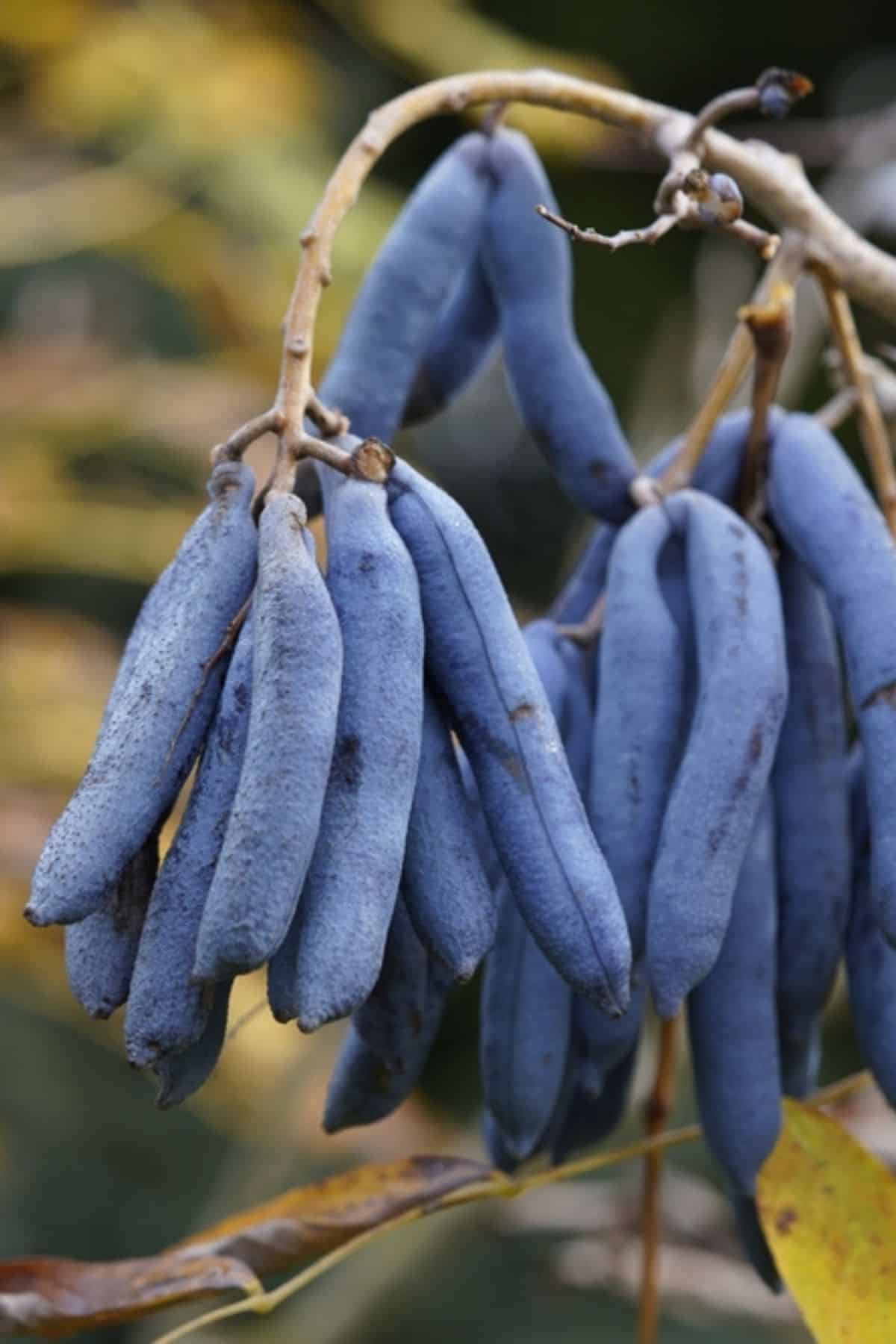
Despite its strange sausage-like appearance and creepy nickname of “dead man’s fingers,” blue sausage fruit is quite sweet and delicious. It has a bright, vibrant, rich blue color and a pulpy flesh. Its cucumber-melon taste makes it great in sweet and savory recipes, especially those that call for either. Blue sausage fruits are a good source of phosphorus, essential fatty acids, and properties that reduce symptoms associated with skin problems and irritations.
6. Blue Honeysuckle Fruits

Also known as the “fly honeysuckle,” blue honeysuckle fruits have a sweet smell and a taste that some would describe as similar to blueberries, raspberries, and black currants. They are delicious, eaten fresh or with yogurt. These odd-shaped blue fruits are high in antioxidants and anti-inflammatory properties and have many health benefits.
7. Blue Java Bananas
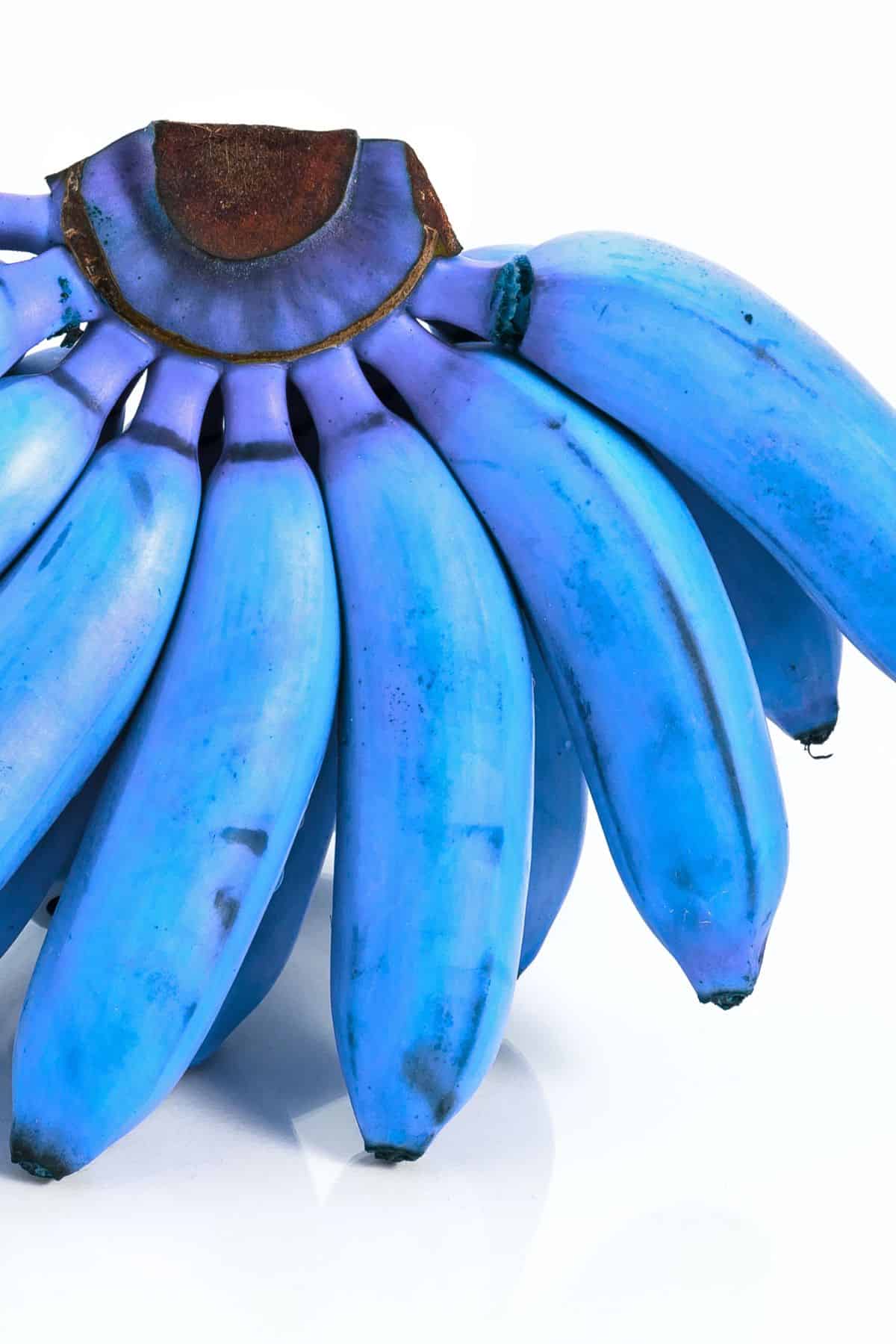
Known for their pleasant vanilla-like aroma and taste, blue java bananas are delicious whether you eat them fresh or cooked. These tasty, light blue fruits have a greenish-blue hue (unlike the bright blue photos commonly seen in pictures). They are excellent when paired with other fruits, eaten with chocolate, or baked in banana dessert recipes such as banana bread or banana upside-down cake. They are also rich in antioxidants and are known to help with weight loss and digestive health.
8. Texas Blue Giant Fig

These massive, deep blue-deep purple fruits are incredibly sweet with honey and berry flavors. When fully ripened, they make a great snack, whether fresh or dried. They are also quite nutritious, packing plenty of antioxidants, vitamins, iron, and calcium.
9. Juniper Berries

Juniper berries have an appearance very similar to blueberries, although slightly smaller. However, the two are pretty different when it comes to taste, with juniper berries having a bold and pungent flavor reminiscent of herbs and spices. For this reason, most don’t eat juniper berries raw but instead use them as a spice or seasoning on meats, stews, sauces, and soups. Health uses include treating urinary tract infections as well as gastrointestinal and autoimmune disorders.
10. Blue Marble Fruit
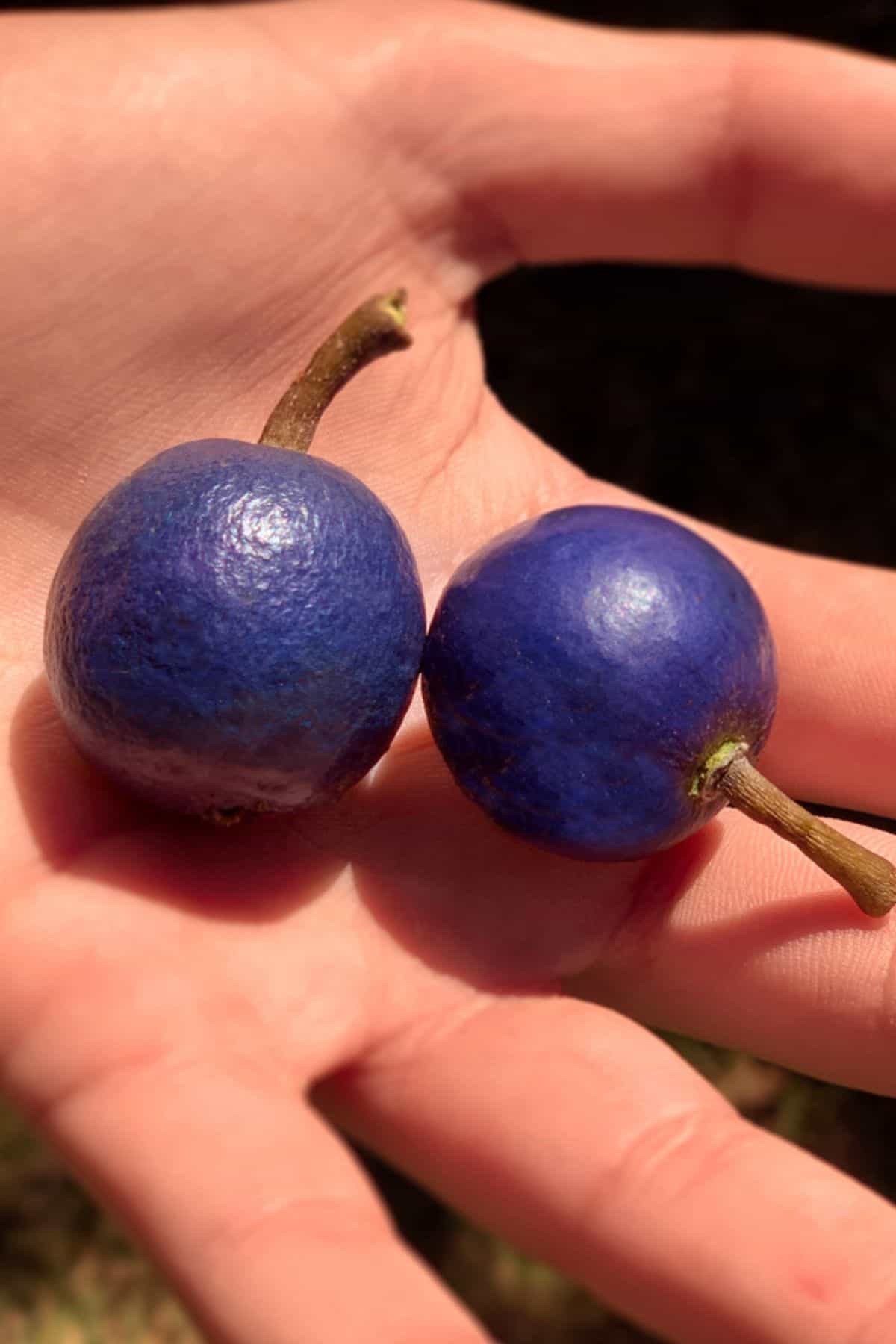
As its name suggests, blue marble fruits are bright blue, round, and have a size similar to shooter marbles. However, these berries aren’t usually consumed as they are filled with seeds versus a fleshy center like other berries. Instead, most people use them to decorate arts and crafts or for medicinal purposes such as blood circulation, liver disorders, and epilepsy.
11. Blue Permain Apple
Blue Permain is an heirloom American apple with a sweet flavor and a sharp, tangy, and tart aftertaste. Its flavor has melon, pear, vanilla, and caramel notes, making it a delicious addition to baked goods, jellies, and apple cider. It is especially tasty in apple desserts like my spiced apple cake or cinnamon apple babka. Blue pearmain apples offer plenty of vitamins and minerals, helping improve digestion, balance fluid levels, and boost immunity.
12. Ceylon Blue Olives

Similar to the appearance of blue marble fruit, Ceylon blue olives are perfectly round and have a beautiful, bright blue color. Despite its avocado-like texture, Ceylon blue olives have a sour taste. You can eat them raw, cooked, or pickled. They also have health benefits such as anti-inflammatory, antibiotic, anti-anxiety, and antidepressant properties.
13. Indigo Rose Tomatoes
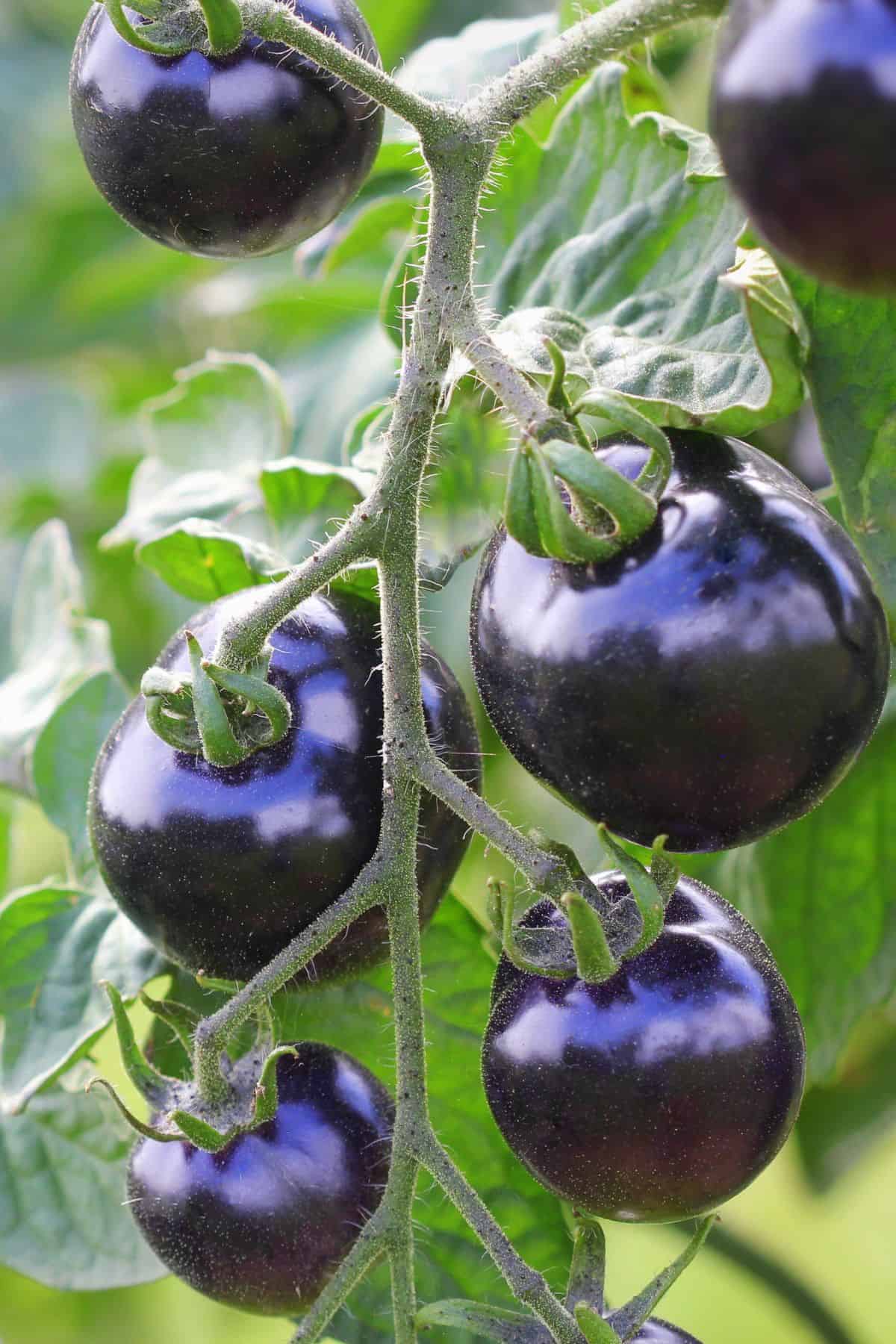
Also known as blue tomatoes, indigo rose tomatoes can have a color that ranges from light pinkish-red to a deep purple-black. Their slightly sweet and acidic flavor resembles a plum’s, making them ideal for salad and snacking. Its bright skin contains plant compounds like anthocyanin, which can help fight cancer, slow aging, and reduce inflammation.
14. Black Currant

Typically harvested in late summer and early fall, black currants are small round berries with a deep, dark blue-purple or black color. They are quite strong and tart in taste due to their high level of tannins but are still delicious when eaten raw when ripe. Black currant has hints of vanilla and wildflower, making it a great addition to sweet desserts or with other fruits to make jam. They are also rich in vitamin C and packed with antioxidants.
15. Damson

Damsons are a type of plum with a blue and oval shape versus the familiar purple color and round shape. They also have a more bitter taste than the sweet taste of a traditional plum, making them better for jams and jellies versus eating raw. They also go great in pies and cobblers and would make an excellent substitute for the peach in my peach cobbler with pie crust. Damsons are a great source of vitamins and minerals, helping regulate blood pressure and prevent anemia.
16. Bilberries

Also called “European blueberries,” it is unlikely to find bilberries in the United States. They are just as delicious as blueberries but softer, juicier, and more robust in taste. Traditionally, one would use them for pie, tart fillings, and muffin recipes or turn them into jams, jellies, sorbets, and liqueurs. Bilberries are high in vitamin C and have historically been used to treat diarrhea, inflammation, urinary issues, and diabetes.
17. Blue Corn

One would expect blue corn to appear on a list of blue vegetables, but believe it or not, corn is botanically classified as a fruit! Although it has a deep blue color, you can use it just as you would any other corn, whether you turn it into flour or mill, cook it, or make tortillas. Blue corn also comes with plenty of nutrients, such as potassium, calcium, and protein, which is great for muscle mass and strength.
18. Sloe Plums

Sloe plums are round, bright blue fruits with a bitter taste. However, most use them to make jams, jellies, liquors, and chutneys versus eating them raw. Because of their astringent properties, sloe plums are great remedies for coughs and colds. They have also been used to treat diarrhea.
19. Juneberries

Also known as Saskatoon or serviceberries, juneberries are small, tasty, grape-sized berries with a color that ranges from reddish-blue to black. They are juicy, rich, and sweet, with flavors that some compare to raisins or black cherries. Juneberries are great additions to recipes that typically use blueberries, such as pies, jellies, jams, or tarts (like my lemon blueberry tart). Juneberries contain more antioxidants than blueberries, strawberries, and raspberries and are an excellent source of vitamins, minerals, iron, and fiber.
20. Huckleberries

Huckleberries have a similar size and shape to blueberries, with a blue-reddish or black color and a flavor that ranges from tart to sweet. Unlike many other fruits, they are not sold fresh in grocery stores and must be picked or bought in packaged products. You will mostly find huckleberry in pies, jams, jellies, wines, and juices. They are extremely rich in antioxidants, potassium, and vitamins B and C.
21. Kastoree Mango
You probably wouldn’t expect to see mango on this list, but when it comes to Kastoree mangos, blue to dark purple is exactly what you will get! This sweet, juicy, tropical-smelling fruit resembles a giant plum with orange flesh. It is incredibly aromatic and is excellent eaten fresh or used in recipes that call for mango, such as my mango mousse cake or mango vanilla tart recipe. Kastoree mangos are a great source of antioxidants and vitamins A and C.
22. Ribier Grapes

Although less popular than green table grapes or Concord grapes, Ribier grapes are easy to find and delicious. They have an oversized shape and a blue-black color with sweet, tender flesh, few seeds, and slightly bitter skin. You can eat them raw or use them to make jellies, jams, and juices. Ribier grapes are also said to have anti-inflammatory, anticarcinogenic, and immune-stimulatory properties, according to the National Library of Medicine.
23. Laurestine

Out of all of the fruits that are blue, laurestine is not very well-known outside of the Mediterranean. Also known as viburnum tinus, it is blue to blue-black in color, has a small, circular shape with pointed ends, and has a metallic sheen. It typically also has pink or white flowers. While aromatic, they do not have a pleasant taste and are more known for their medicinal and decorative properties.
24. Filius Blue Pepper

Like corn, peppers are probably one of the last things you think about when thinking about what fruits are blue, but botanically speaking, they are fruits! Filius blue peppers have a deep purple-blue color that eventually turns red. Their flavor gets milder and sweeter as they turn from blue to red. When blue, they are great additions to salsas and sauces. Filius blue pepper is an excellent source of vitamin C and can enhance hair and skin, promote red blood cell development, improve heart health, provide joint pain relief, and aid digestion.
25. Jostaberries

Jostaberries are small, glossy, deep blue-purple berries that some describe as a cross between a gooseberry and black currant with a hint of grape. Although slightly tart and tangy, they are sweet enough to eat raw in desserts and salads or cooked in savory dishes. It is also quite nutritious, with high levels of vitamin C and properties that help maintain eye health, reduce cholesterol and blood pressure, and fight signs of aging.
Blue Fruits FAQs
Blue fruits get their color from polyphenols and anthocyanins, beneficial plant compounds that give off blue hues.
Most blue fruits are high in nutrients and powerful antioxidants such as vitamin C and anthocyanins. These help improve heart health, boost brain function, lower blood pressure, and reduce cancer risk.

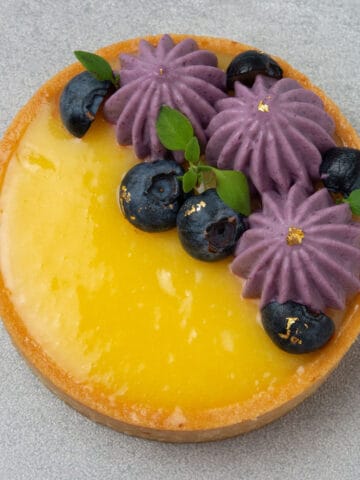
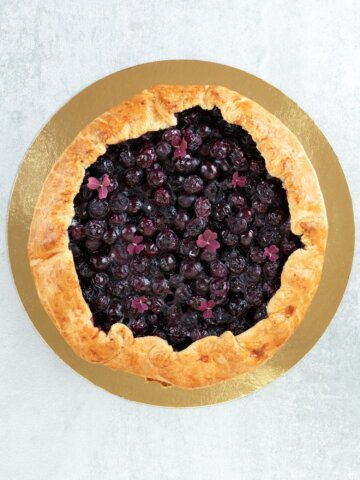
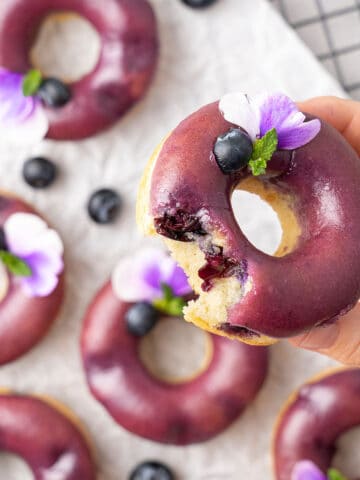
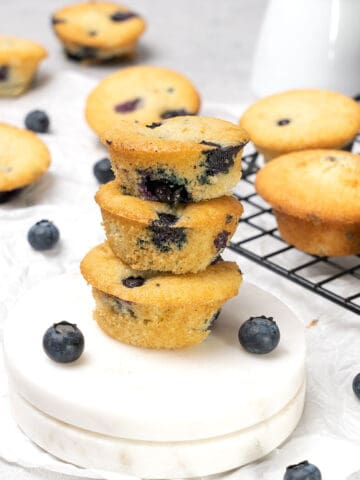
Leave a Reply